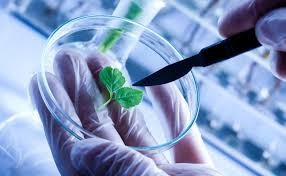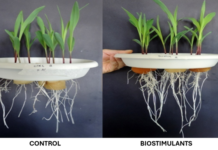The global market for agricultural biotechnology reached $29.2 billion in 2016. This market should reach $32.1 billion in 2017 and $53.7 billion in 2022, with a compound annual growth rate (CAGR) of 10.8%.
Report Scope:
The study scope includes key agricultural biotechnology tools (i.e., next generation DNA sequencing, biochips, RNA interference, synthetic biology tools and genome editing tools); synthetic biology-enabled chemicals and biofuels; biotech seeds; and biologicals.
BCC analyzes these technologies and products to determine present and future market sizes, and forecasted growth from 2017 through 2022. The report also discusses industry strategic alliances, industry structures, competitive dynamics, patent status, and market driving forces.
BCC provides in-depth coverage of the agricultural biotechnology industry structure, including genomics technology providers (e.g., genome editing, NGS, microarray companies); major seed companies; biotech traits companies; synthetic biology tools companies; companies developing plant feedstocks; and agricultural biologicals companies. It provides an in-depth analysis of major industry acquisitions and alliances during 2015 and 2016.
70 agricultural and biotechnology companies are profiled in this report.
Report Includes:
– An overview of the global markets for agricultural biotechnology and related emerging technologies
– Analyses of global market trends, with data from 2015 and 2016, estimates for 2017, and projections of compound annual growth rates (CAGRs) through 2022
– Segmentation of the markets by product type (microarrays, DNA sequencing, biochips, synthetic biology-enabled and transgenic seeds), by crop type, and by geography
– Information on growth driving forces, market applications, industry structure and competitive dynamics
– Analysis of key technologies and products to determine the present and future status of the market
– Profiles of major players in the industry
REASONS FOR DOING THE STUDY
Agriculture is a fundamental and strategic component for a country. As a result, agricultural technologies provide competitive geographic advantage and are highly desirable. Biotechnologies address the pressing industry need for higher crop yields. Agricultural biotechnology is a key and growing component of the global agriculture industry and is thus of interest to a wide audience.
This report seeks to provide a qualitative and quantitative description of the agricultural biotechnology industry so that emerging market opportunities can be identified and exploited by the reader.
The report does this by examining the main product applications and markets, helping companies to prioritize product opportunities and strategic opportunities. The report
highlights key market and industry trends, as well as quantifying the main market segments. The reader is thus able to better understand industry structure and changes occurring in the industry.
Rapid changes in technology-intensive fields such as DNA sequencing, genome editing, and synthetic biology are driving new products and applications in agriculture. These developments create unique market opportunities. This report analyzes these trends and their impact on future markets for agricultural products.
Based on these market and technology dynamics, it is especially timely to examine the agricultural biotechnology industry.
SCOPE AND FORMAT
The study scope includes key agricultural biotechnology tools (i.e., next generation DNA sequencing, biochips, RNA interference, synthetic biology tools and genome editing tools); synthetic biology-enabled chemicals and biofuels; biotech seeds; and biologicals.
BCC analyzes these technologies and products to determine present and future market sizes, and forecasted growth from 2017 through 2022. The report also discusses industry strategic alliances, industry structures, competitive dynamics, patent status, and market driving forces.
BCC provides in-depth coverage of the agricultural biotechnology industry structure, including genomics technology providers (e.g., genome editing, NGS, microarray companies); major seed companies; biotech traits companies; synthetic biology tools companies; companies developing plant feedstocks; and agricultural biologicals companies. It provides an in-depth analysis of major industry acquisitions and alliances during 2015 and 2016.
70 agricultural and biotechnology companies are profiled in this report.
Visit More Information: https://www.trendsmarketresearch.com/report/sample/11789









